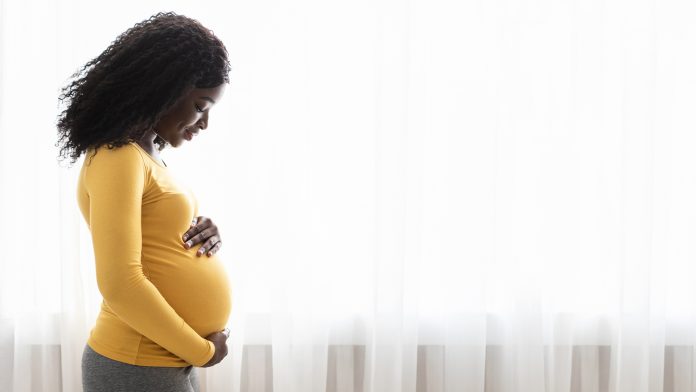
Levels of stress during pregnancy have been linked to negative emotions in babies according to a new study from Northwestern University.
Pregnant women who had greater fluctuations in stress during pregnancy, known as lability, had infants who exhibited more negative emotions such as fear, sadness, and distress than mothers who experienced less variability.
This study is one of the first to measure mothers’ experiences of stress in real-time on multiple occasions. This enabled researchers to take a deeper look at the relationship between mothers’ stress during pregnancy and infant development.
The study will be published on September 7 in the journal Infancy.
Mothers experience stress during pregnancy differently
“Research often examines stress as a static, unchanging construct—one that is either high or low, present or absent—but most of us have a lot of ebbs and flows in our stress depending on what is going on around us,” said lead study author Leigha MacNeill, research assistant professor of medical social sciences at Northwestern University Feinberg School of Medicine.
“That variability is inherent in our daily lives, so this lability is capturing an important aspect of stress and offers insight into how to measure stress going forward. This is of particular importance as we work to closely capture the maternal-foetal environment as it relates to how babies develop over time.”
This study suggests that one mother who experiences consistent levels of stress during pregnancy, and one who experiences fluctuations between very low and very high levels of stress may experience similar overall stress levels. Yet, this average may not capture the meaningful differences in terms of what the foetus is exposed to.
“There may be something about that gestational experience, when a mother moves between extremes, that shapes the child’s disposition toward negative emotions,” MacNeill said. “That kind of stress pattern could reflect instability in daily life experiences, unpredictable external stressors or instability in how a mother perceives her lived experiences, which may have important implications for children’s emotional development.”
The researchers did not intentionally conduct the study during a pandemic. Some participants completed their assessments before the pandemic began, while others completed their assessments during the pandemic. According to MacNeil, the researchers embraced this ‘natural experiment’.
“We asked about general stress—not pandemic-related stress,” MacNeill said. “But we took advantage of the occurrence of the pandemic during the course of the study to see if we could detect its impact on mothers’ experiences,” said MacNeil.
“We found that mothers’ stress patterns were unrelated to the timing of the pandemic. Mothers reported similar levels of stress regardless of whether their stress measurements occurred before or during the pandemic.”
Stress fluctuation led to negative results
Using a questionnaire, the researchers measured the participant’s stress levels up to four times per day over 14 weeks. Three measures of stress during pregnancy were identified by the team: stress at the first time of assessment (baseline), average or typical levels of stress across the 14-week period, and the amount a person changed in their stress from one time to the next across the 14-week period (lability).
The mood of the infants was measured via a questionnaire given to mothers when their child reached three months old. Mothers answered questions about their child’s sadness, distress, and fearfulness (e.g., how much they clung to their parent when introduced to an unfamiliar adult).
Results showed that the children of mothers who experienced more fluctuation in stress during pregnancy displayed more negative emotions in their first three months. Despite their findings, the researchers expressed the need for more research in larger and more diverse samples. The understanding of how stress during pregnancy and the gestational environment impact the developing foetus is not yet clear, according to MacNeil.
“This is a really early index (three months), so we’d want to see how consistent their negative affect levels are in the first year of life,” MacNeill said.
This study illustrates that links between parent and child are based on genes as well as experiences, even before birth,” said Dr Matthew Davis, chair of the department of paediatrics at Feinberg. “One of the most important approaches to having a less distressed child is to support expectant parents and minimise their stress during pregnancy. That can be accomplished through clinical care, social support, and policies that are family- and pregnancy-friendly.”
























